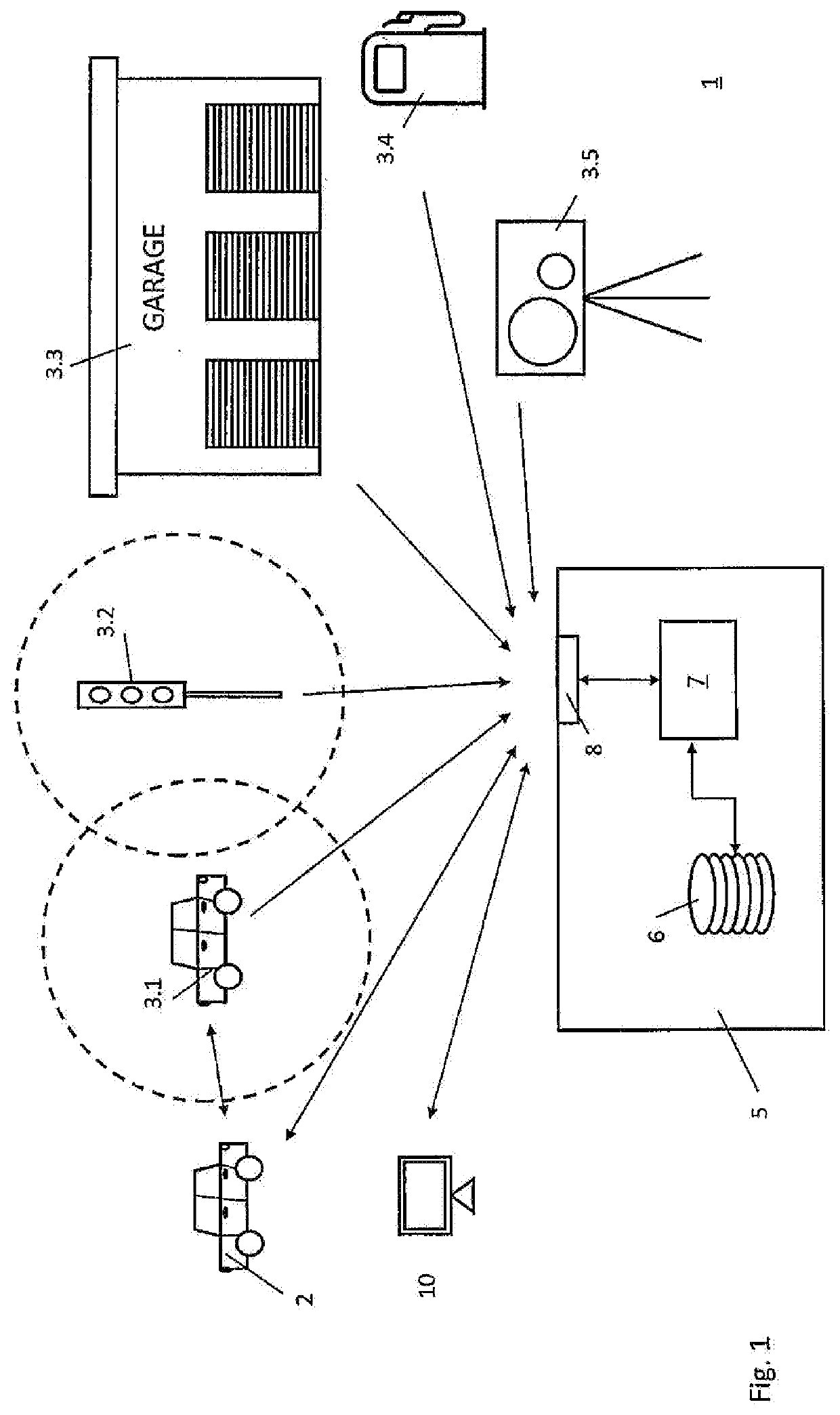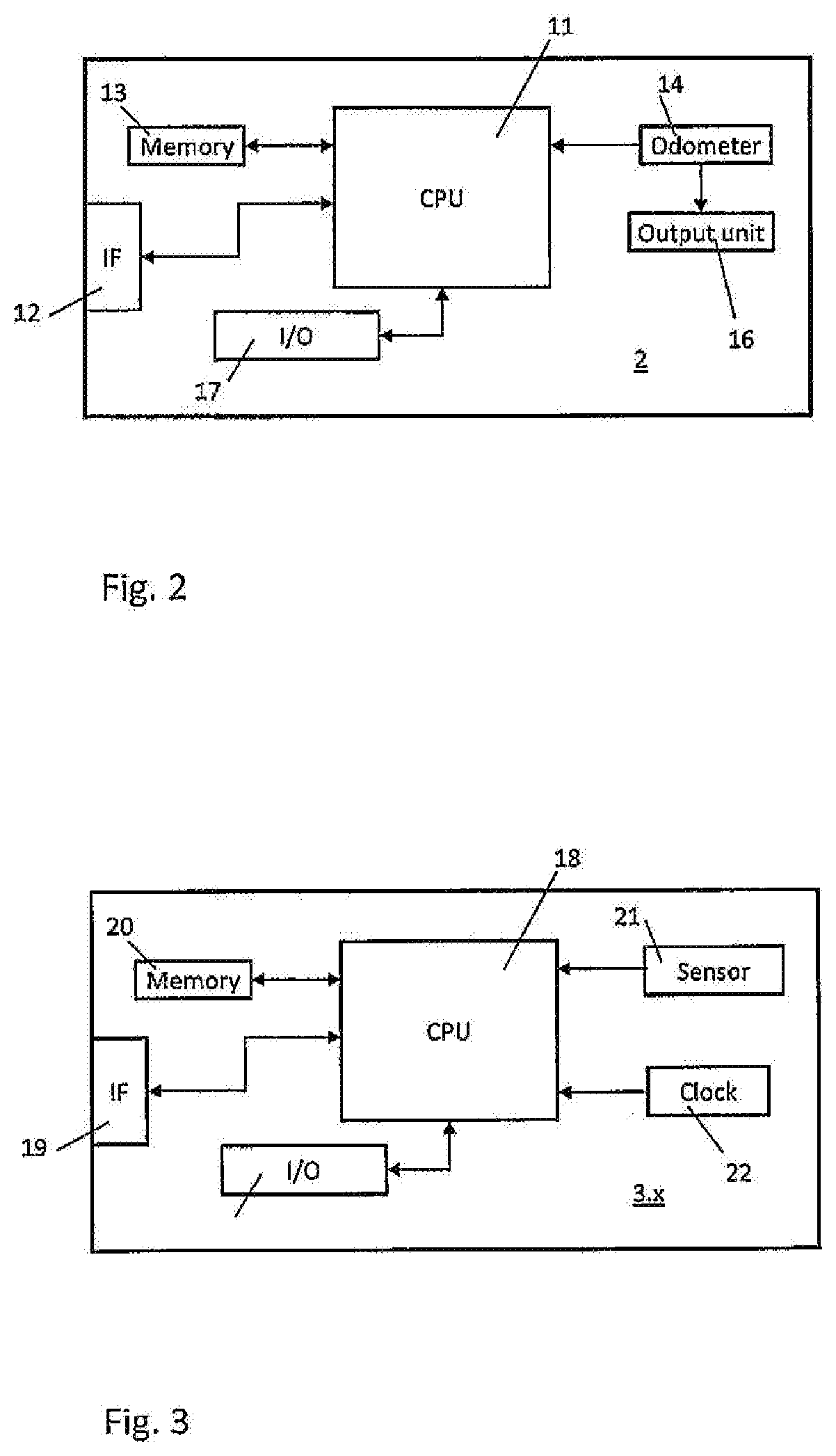Method and system for verifying vehicle usage data
a vehicle usage and data verification technology, applied in the field of vehicle usage data verification methods and systems, can solve the problems of not only the manipulation of data, but also the serious problem of the potential buyer of the vehicle on how much the vehicle was used, and it is difficult to detect such fraud. , to achieve the effect of enhancing the databas
- Summary
- Abstract
- Description
- Claims
- Application Information
AI Technical Summary
Benefits of technology
Problems solved by technology
Method used
Image
Examples
Embodiment Construction
[0047]FIG. 1 shows an overall structure of a system 1 according to the present invention. The system 1 is used to validate vehicle usage data of a vehicle 2. Vehicle usage data may be any kind of meter data that is data which changes in response to operation of the vehicle 2. Preferred examples for such meter data are mileage or operating hours. Meter data is generated by means of internal sensors of the vehicle 2.
[0048]The system 1 further comprises a plurality of observer entities 3.x. These observer entities 3.x are distributed in an environment in which the vehicle 2 is operated. Examples for such observer entities 3.x are another vehicle 3.1, which is a movable observer entity. Of course, any other vehicle that is capable to communicate with the vehicle 2 (the communication between the vehicle 2 and the observer entities 3.x will be explained later on), may be an observer entity 3.1. Only for simplicity of the illustration a single other vehicle 3.1 is shown as a representative...
PUM
 Login to View More
Login to View More Abstract
Description
Claims
Application Information
 Login to View More
Login to View More - R&D
- Intellectual Property
- Life Sciences
- Materials
- Tech Scout
- Unparalleled Data Quality
- Higher Quality Content
- 60% Fewer Hallucinations
Browse by: Latest US Patents, China's latest patents, Technical Efficacy Thesaurus, Application Domain, Technology Topic, Popular Technical Reports.
© 2025 PatSnap. All rights reserved.Legal|Privacy policy|Modern Slavery Act Transparency Statement|Sitemap|About US| Contact US: help@patsnap.com



